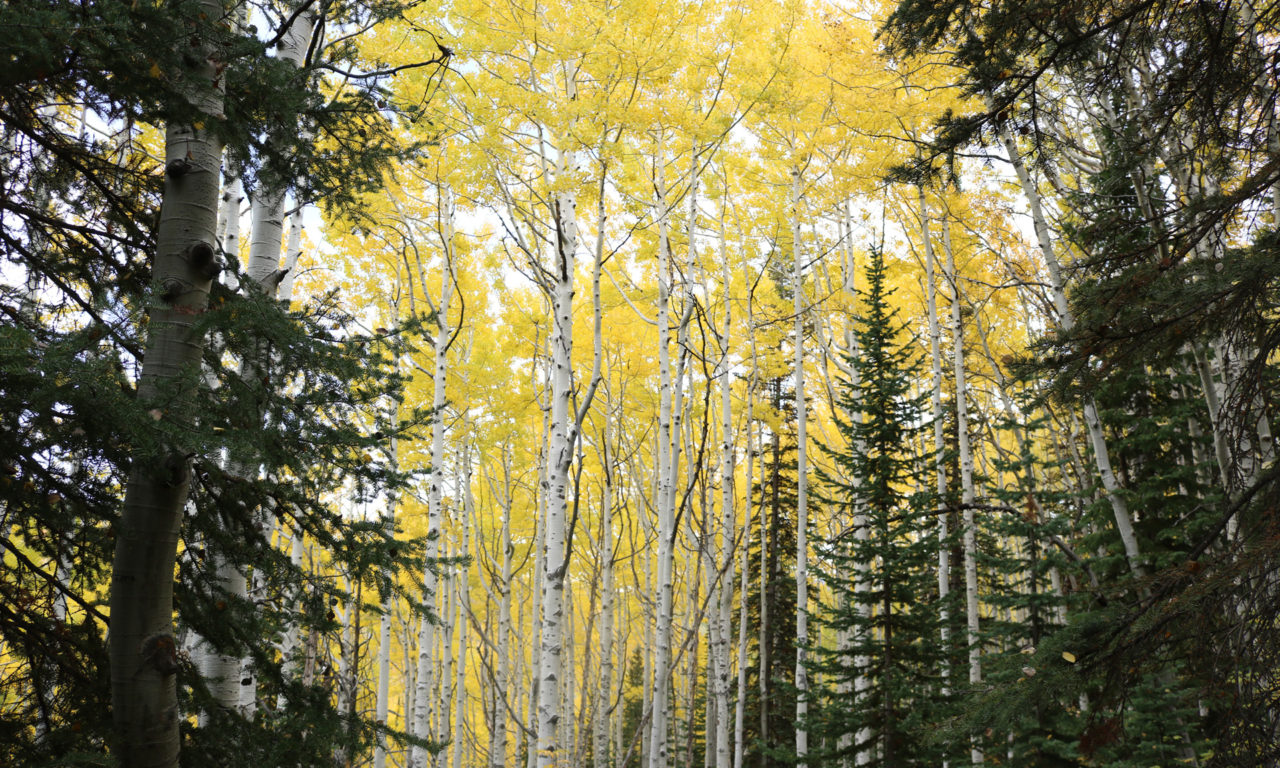If you’ve lived in Colorado for more than a year, you’ve likely seen the brilliant color display that occurs in autumn. Countless leaves change to yellows, oranges, and reds before falling off with winter’s arrival. Other trees keep their leaves for the whole year and don’t change color at all. Have you ever wondered why this color change happens for some trees and not for others?
To answer that question, let’s talk about the leaf’s job: to create food for the tree. During warm months, a leaf performs photosynthesis, gathering the sun’s rays and using that solar energy to convert carbon dioxide and water into sugars and starches. This occurs in large part thanks to chloroplasts—organs within a leaf’s cells that contain lots of chlorophyll, which gives a leaf its green color and helps it absorb solar energy. During this growing season, a leaf’s chlorophyll regenerates almost constantly to ensure that it can continue to do its job.
As autumn arrives in Colorado, shorter days (and less sunlight) signal to a leaf that winter is approaching. At this point, a tree has two options: keep its leaves and put in energy to keep them healthy or get rid of the leaves and wait to regenerate new ones until the conditions are right for photosynthesis again. Trees that take the second route are called deciduous, a word which means “to fall down or off.” For these trees, it’s more energy efficient to go dormant, or hibernate, during the winter than to try to keep leaves alive during the cold, dark season. This process closes the connections between a leaf and its stem to preserve the tree’s water for when it’s resting. Ultimately, this kills the leaf and causes it to fall.
Once a tree begins going dormant, depriving the leaf of water, regenerating chlorophyll becomes almost impossible. As that bright green fades, it opens up visual opportunities for yellows and oranges that have been in the leaves all season but are less vibrant compared to chlorophyll’s green. As the chlorophyll dies off, chemical changes form new pigments, including those brilliant reds and even purples. Here, then, is where we find those brilliant autumn colors!
Color Spectrum
Different species of trees display different colors based on their unique combinations of pigments. For example, aspens are known for their daffodil yellow, while maples display brilliant reds. The weather also plays a significant role in how vibrant the colors are. Rainy and overcast autumn weather make the colors more vibrant, and lower temperatures will bring out more reds, but an early freeze will dull that vibrance.
Staying Green
What about the trees that don’t change colors at all? Those are evergreen, or coniferous trees, meaning they are leafed the entire year. We call their leaves ‘needles,’ due to their pointy, poky shape, but they function the same as deciduous leaves. Evergreen trees grow new needles at roughly the same speed that they get rid of old ones, so we humans don’t notice the turnover. One needle can stay on an evergreen tree for as long as four years!
Better to Keep or Drop Leaves?
There are benefits and drawbacks to keeping leaves or dropping them. By keeping leaves around for a long time, evergreen trees don’t have to put in as much effort to grow needles from scratch; they just need to keep them alive and healthy. However, this makes a tree vulnerable to the dangers of strong winds and heavy snowstorms which can use the extra surface area of a tree’s needles to bend and even break branches. In contrast, deciduous trees can weather an intense winter storm better without leaves, as snow and wind can move around and slide off their curved branches, protecting the main structure of the tree.
For a socially-distanced adventure this autumn, take a drive along the Peak to Peak Highway to see a beautiful patchwork of reds, oranges, and yellows mixed in with the various shades of evergreens. Can you figure out which trees show which colors?


